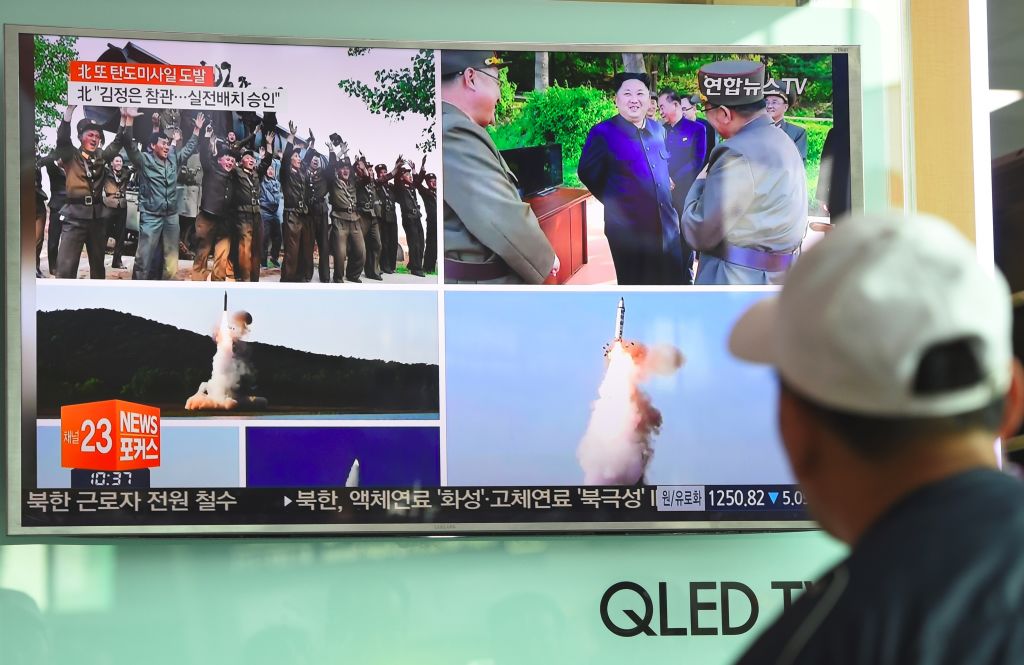
After what North Korea has deemed a successful missile test on Sunday, the country claims it has harnessed the capability to begin mass-production of missiles that are capable of reaching U.S. military bases in Japan. In the recent past, North Korea did target practice for this goal, which prompted Japanese Prime Minister Shinzo Abe to place his country under the highest possible alert. In the wake of those missile tests, The Washington Post reported that the Korean Central News Agency described the tests as “tasked to strike the bases of the U.S. imperialist aggressor forces in Japan.” Now, the country may be moving close to following through on their threats.
The comments coming out of North Korea following their most recent missile test are even more pointed, mentioning Trump by name, and further threatening the U.S. with future missile strikes, via the Associated Press:
“The Trump administration would be well advised to lend an ear to the voices of concern that are heard from the U.S. and the international community,” the North’s Minju Joson newspaper said in a commentary Sunday. “Many more ‘Juche weapons’ capable of striking the U.S. will be launched from this land. This is the DPRK’s answer to the Trump administration.'”
While North Korea’s claims of progress are still unproven, U.S. authorities stress that the country cannot yet strike Guam, a crucial staging point for U.S. troops in any future war against North Korea. That capability could be on the horizon, though, as North Korea begins to refine their technology and use of solid missile fuel.
Beyond the obvious mileage and height, North Korea did gain some much-needed data from Sunday’s tests, the New York Times reports:
“South Korean and United States intelligence authorities believe that through yesterday’s test, North Korea has collected data meaningful in improving the reliability of its missile technologies,” Colonel Roh said on Monday. “But we need more analysis to determine whether the warhead had a stable atmospheric re-entry.”
(Via The Washington Post, The New York Times, and Associated Press)
